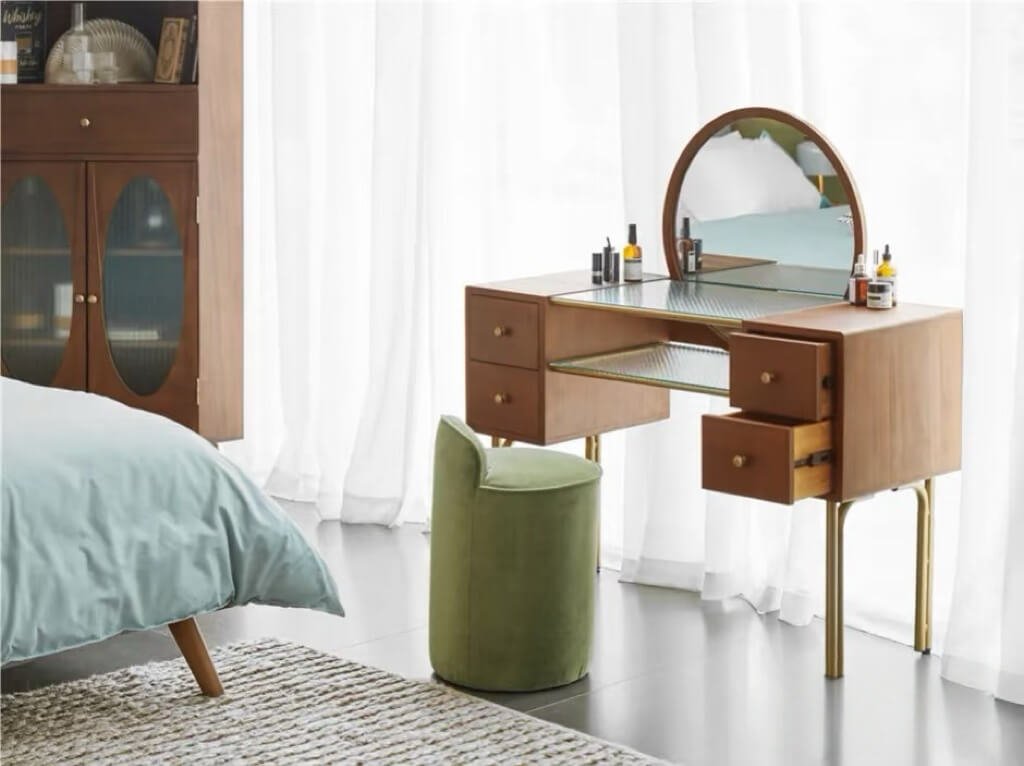The Mid-Century Charm: Blending Retro and Modern in Your Home
News 2025年6月11日 49
In today’s fast-paced world, more and more people are yearning to return to nature and pursue a simple yet high-quality life. The mid-century modern design style, often referred to as “mid-century” or “mid-century modern,” has become a source of inspiration for many in creating their ideal homes. This article will guide you through the principles of creating a mid-century-inspired home that exudes a sense of vintage charm and modern comfort.
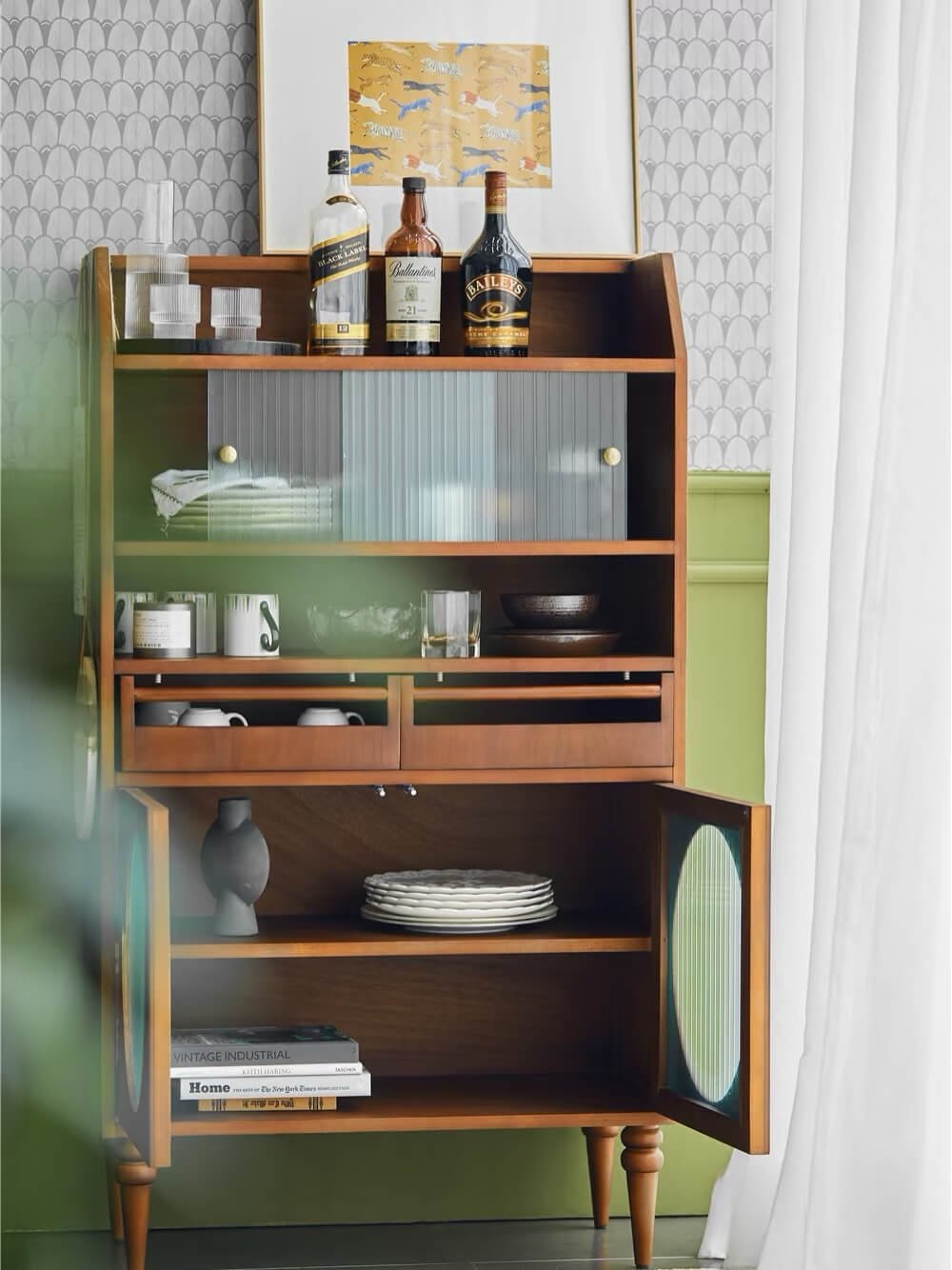
“Mid-century” refers specifically to the modernist design style of the mid-20th century. Furniture from this period is a testament to the era’s design ethos, characterized clean by lines, practical functionality, and a forward-thinking aesthetic. These pieces are not just objects but a reflection of the time’s pursuit of a better life. They discard excessive ornamentation in favor of pure form, yet their unique charm is undeniable.
Warm Tones: The Gentle Backdrop of Home
To create a mid-century-inspired home, start with the colors. Warm tones are the soul of the mid-century style, capable of creating a cozy, comfortable, and layered atmosphere in any space.
The natural wood color is an essential hue in mid-century design. It represents nature and simplicity, evoking the warmth of the earth. Opt for furniture made from wood species like oak or walnut, whose visible grain patterns tell stories of nature. Each piece, whether it’s a coffee table in the living room, a dining table in the dining area, or a bedside table in the bedroom, brings a sense of tranquility and rustic charm to your home. Over time, wood furniture develops a unique patina and texture, becoming more precious with age.
Brass is the accent color that adds a touch of sophistication to mid-century design. It exudes a vintage yet luxurious glow, bringing a sense of refinement to the space. In mid-century home decor, brass elements are cleverly used in lighting, decorative items, and furniture hardware. A brass chandelier, with its unique shape and soft light, becomes a focal point while illuminating the entire space; brass decorative pieces like candle holders or picture frames, quietly placed in corners, add an artistic flair to the home; and brass handles and hinges on furniture, though small, highlight quality and style in the details.
Glass is another material that adds a sense of transparency and modernity to mid-century design. The combination of transparent glass with warm wood and brass creates a unique visual effect. For example, a side cabinet with a glass and wood combination retains the natural feel of wood while making the space appear more open. A glass lamp with brass trim, blending vintage and modern elements, emits a soft and enchanting light. This clever material pairing ensures that mid-century homes are both retro and stylish.
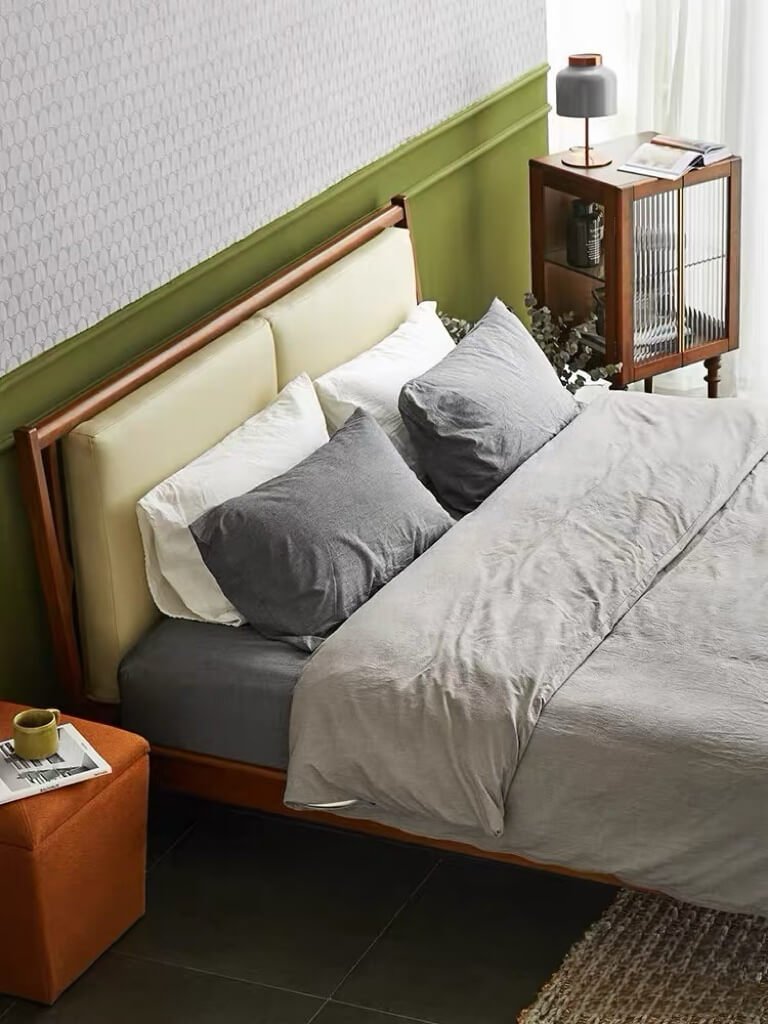
Soft Curves: The Gentle Contours of Space
Mid-century furniture is renowned for its soft curves. These gentle and understated arcs not only make the furniture visually smooth and fluid but also enhance comfort, giving the entire space a sense of approachability.
In mid-century sofa design, you often see rounded armrests and backs. These designs not only conform to ergonomics, allowing users to relax more comfortably, but also create a soft and inclusive visual effect. Sitting on such a sofa feels like being embraced by a warm hug, instantly relieving all fatigue. Moreover, the legs of the sofa are often designed with curves to match the overall shape, making the sofa appear lighter and more elegant.
Coffee tables and dining tables are also common mid-century furniture pieces with curves. Their edges are usually meticulously rounded to avoid the potential safety hazards of sharp corners, while also making the furniture look softer and more natural. A coffee table with rounded edges, placed in the center of the living room, is not only convenient to use but also adds a soft atmosphere to the space. A dining table with rounded edges creates a warm and comfortable dining environment, where family members can gather and enjoy meals together, feeling each other’s warmth and care.
In the design of mid-century cabinets and wardrobes, curves are also cleverly used. The edges of cabinet doors and drawer handles are often designed with rounded shapes, making the entire cabinet look more delicate and refined. These soft curves not only make the furniture visually more pleasing but also reduce the possibility of bumps and scratches during use, bringing more safety and comfort to the home.
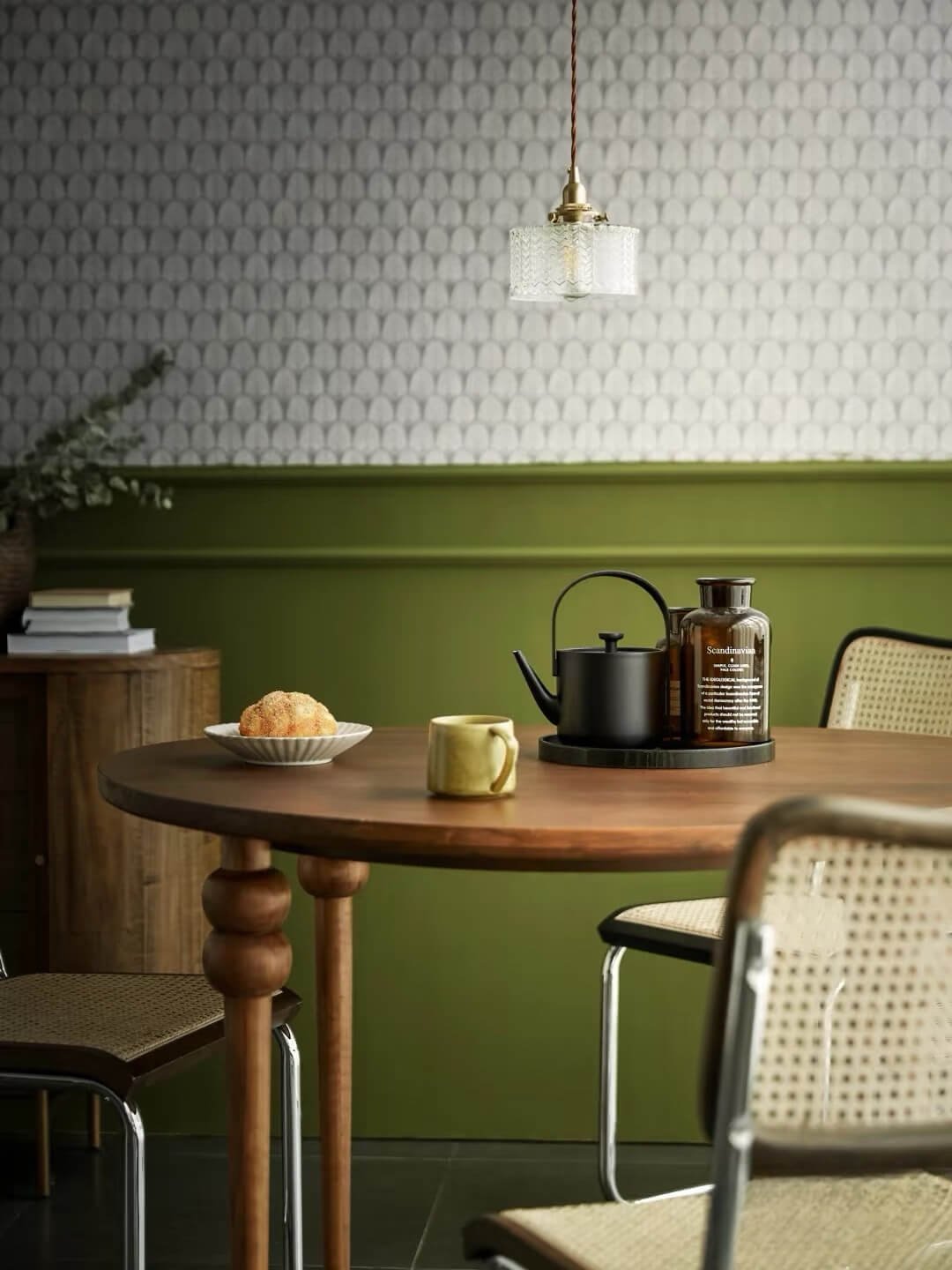
Comprehensive Functionality: The Balance of Utility and Aesthetics
The enduring appeal of mid-century furniture lies not only in its unique design and aesthetic value but also in its comprehensive functional design. The ingenious structure and durable, sturdy quality ensure that these pieces are not only beautiful but also practical, bringing a comfortable and natural state to the home.
The structural design of mid-century furniture is often very ingenious, with every detail carefully considered. Take a bookshelf as an example. A mid-century bookshelf not only has enough shelves to meet the storage needs of books but also cleverly designs hidden storage spaces, such as drawers or small cabinets, for storing miscellaneous or private items. This ingenious structural design satisfies storage functions while keeping the entire bookshelf looking neat and beautiful.
In terms of durability and sturdiness, mid-century furniture is uncompromising. It is usually made from high-quality materials such as solid wood and metal, which not only have good durability but also develop a unique texture over time. For example, solid wood furniture develops a natural patina after years of use, making the furniture look warmer and more lustrous; metal furniture, with its robust and durable characteristics, can withstand daily use and wear and tear, standing the test of time.
The size and proportion of mid-century furniture are also carefully designed to adapt to different spaces and usage needs. Whether it’s a small apartment or a spacious villa, suitable mid-century furniture can be found to match. For example, in a small living room, choose a compact mid-century sofa paired with a low coffee table to meet daily usage needs without making the space feel cramped. In a spacious dining room, place a large mid-century dining table with comfortable chairs to create a grand and comfortable dining atmosphere.
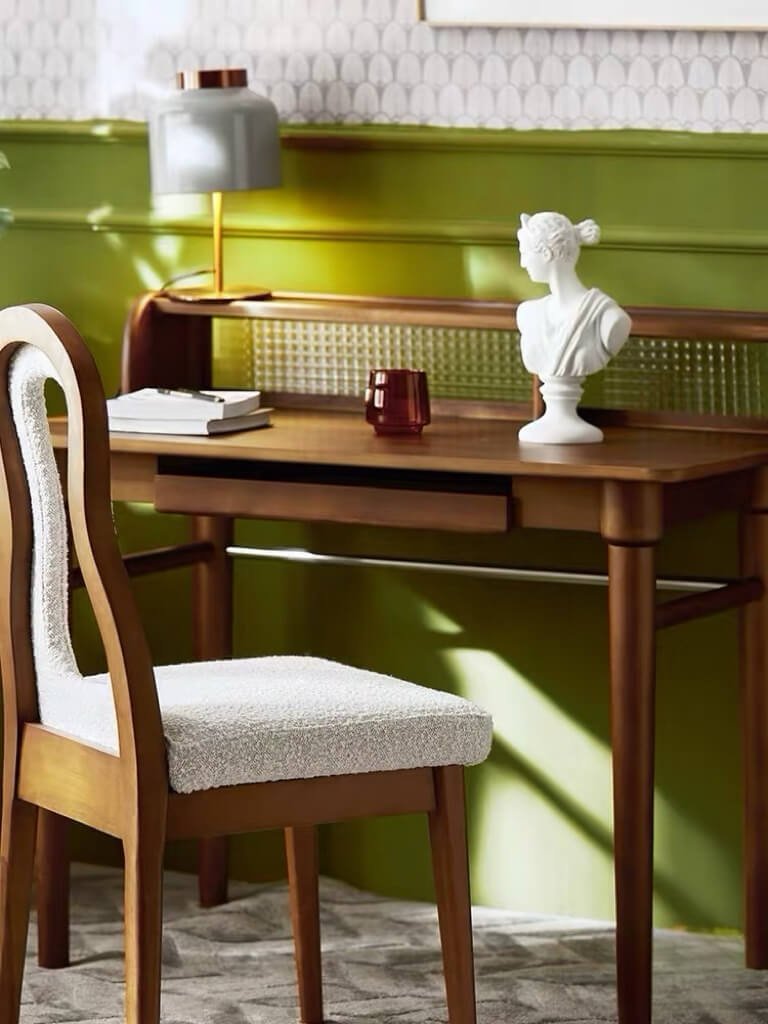
Decorative Details: The Key to Creating a Mid-Century Ambiance
In addition to the design and selection of furniture itself, decorative details are also key to creating a mid-century ambiance. The right decorations and accessories can add more mid-century charm to the home, making the entire space more complete and harmonious.
Rugs are a common decorative element in mid-century homes. Choose a rug with a vintage pattern or texture and place it on the floor of the living room or bedroom to instantly enhance the quality of the space. The pattern of the rug can be geometric shapes, floral patterns, or abstract textures, and the color should be warm tones that echo the furniture, such as beige, brown, or dark red. Rugs not only serve a decorative purpose but also add warmth to the home in colder seasons.
Curtains are another important element in creating a mid-century atmosphere. Choose heavy, vintage-patterned fabrics curtain such as velvet or linen to add a sense of luxury and warmth to the home. The color of the curtains can be coordinated with the furniture or chosen in contrasting colors to create a visual impact. For example, in a living room with wood furniture, pair a dark red velvet curtain to highlight the quality of the furniture while adding a romantic atmosphere to the space.
Decorative paintings and ornaments are also indispensable. Choose mid-century-style decorative paintings, such as abstract art, vintage photos, or artistic illustrations, and hang them on the walls of the living room or above the headboard in the bedroom to add an artistic touch to the home. Ornaments can include vintage ceramics, glassware, or metal sculptures, placed on coffee tables, side cabinets, or bookshelves to make the space more interesting and lively.

Conclusion
Creating a mid-century-inspired home is a perfect blend of classic and modern, a pursuit of nature and simplicity, and an unrelenting quest for quality in life. By choosing warm tones, soft curves, comprehensive functionality, and carefully selected decorative details, we can create a living space that is both vintage and modern, comfortable and beautiful. In this fast-paced era, let’s find tranquility and beauty in mid-century homes, enjoying a simple yet not simplistic lifestyle.
